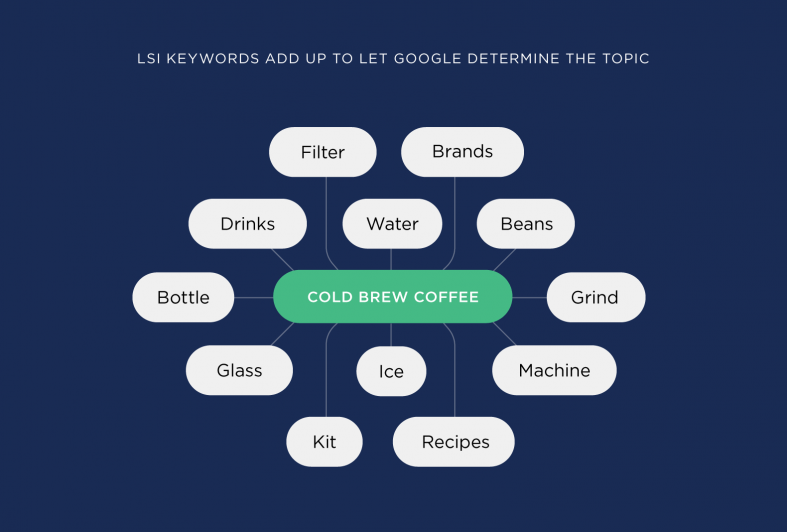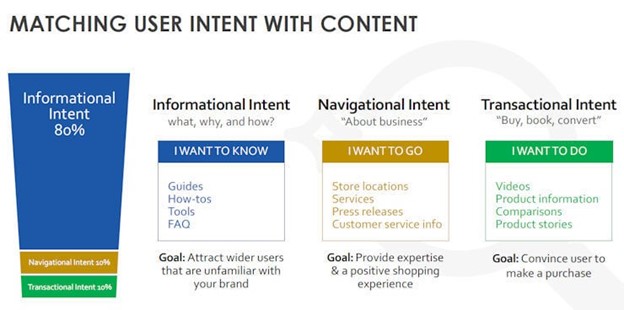Earning top Google ranking is the pinnacle of any online business' success. Here's what you need to do: 1. Perfect your on-page SEO 2. Focus on keywords you want to rank higher 3. Add LSI keywords...
“What else can I do to get top Google ranking?”
As a content marketer, nothing feels more frustrating than seeing your site rank among the last pages of Google, despite continued efforts to improve your SEO strategy.
If you find yourself in such a sticky situation, know that you’re not alone.
Even some of these big brands and online businesses started there.
Sometimes it feels like whatever effort you try to climb up the ranks, nothing works.
You feel like Google is out to destroy any signs of success for your website and have no clue as to why.
If this sounds familiar to you, you’re definitely in the right place.
Website ranks are an indicator of your business’s online marketing success.
You must strive to get into Google’s first page rankings to receive any tangible visibility or traffic.
Let’s explore how to rank higher on Google in 2022.
Get Ranked on Google
Getting top rankings on Google is the pinnacle of any online business’s success.
However, this doesn’t happen overnight.
It demands a lot of resourcefulness, persistence, dedication, and creativity.
Google’s algorithm’s constantly-changing nature requires that you’re always sharp and ready to update your website on-the-fly whenever a new ranking algorithm pops up.

But while there’s no magic to getting your website to the top spots in the SERPs, there are several tips and strategies that support your website to get there.
Here’s what you need to do.
1. Perfect Your On-Page SEO
On-page SEO is the practice of optimizing web pages in order to improve the website’s search engine rankings.
Let’s break down some key on-page SEO factors that will win you favor with Google and your visitors.
Title tags

Title tags have been around since the birth of the internet.
They’ve literally stood the test of time and still play a critical role in how well your website performs.
The secret to winning with your title tags is by ensuring that each is descriptive, catered, and unique to your target keywords.
You also want to avoid using similar title tags and keywords repetitively throughout your posts.
Here, diversifying your opportunities means how you get Google and visitors to notice your content.
A good product page should use the following formula:
Product’s Name – Product’s Category | Brand Name
For example:
Curly Hair Shampoo and Conditioner – Hair Care | Danley’s DIY
This example is simple but says a lot.
It basically tells Google and searchers all they need to know about your website.
You must also keep in mind that Google displays roughly 60 characters of your title tags on a SERP.
However, you shouldn’t cut yourself off if your title tag doesn’t allow it.
Meta Descriptions

While these have a negligible impact on your overall rankings, they still help determine your search snippet.
Plus, they add a layer of uniqueness to your post, which could influence your CTR from the SERPs, a bonus.
Structured Data Markup
Did you know that nearly a third of Google SERPs use rich snippets supported by schema?
But less than 0.3% of websites take advantage of this?

Think of schema markups as an extra-label of information that informs Google what your content is about.
Not only that, but it also attracts more traffic to your website.
If you would like to know more about on-page SEO, you can check out this post here.
2. Focus on Keywords You Want to Rank Higher
If you want to get first-page rankings, you must focus on using the target keywords you want to rank higher in Google search results.
First, filter out all the keywords you intend to use or keywords similar to your target keywords.
From this list, skim out the high-volume keywords that you want to rank for and want to improve rankings for.
Therefore, there’s no point chasing after rankings if you’re using low-value keywords or those likely to be difficult to apply.
Having said that, you generally want to look for keywords that are already driving the most traffic.
You also want to focus on keywords with high search volumes to ensure that visitors are actually searching for that particular keyword.
Prioritize using keywords with low keyword difficulty scores that take less effort to get ranked on Google.
BiQ’s Rank Tracking is the best SEO optimization tool you can use to track your keywords and page rank movement.
With Rank Tracking, you can monitor critical data similar to that seen in Google Search Console.
This helps you to quickly identify your keywords’ gains and losses in real-time so you can act to secure your keyword rankings.
3. Add LSI Keywords to Your Page
LSI keywords also play a critical role to help get ranked on Google.
They are an advanced on-page SEO tactic that can propel your website to the first page of the Google search engine results page when applied correctly.
LSI keywords are basically words and phrases similar to your content topic.
For example, for a keyword like “Cold Brew Coffee.”
Its LSI keywords would be something like this:

LSI keywords help affirm to Google that your web page is actually about that topic.
In this case, “Cold Brew Coffee.”
Now, how do you find and use the right LSI keywords on your website?
BiQ’s Keyword Intelligence features critical tools to help you locate related keywords that searchers are likely to search for.
The keyword tool allows you to search for related keywords for your targeted keyword.
You will see vital insights as to how many people actually search for your keywords, their intent for those searches, and so on.
The example below depicts the results of LSI keywords for the targeted keyword “social media marketing”.
Therefore, if you are unsure about which keywords to use, this tool allows you to sort them based on value.
Essentially, higher valued keywords will potentially bring more traffic to your website.
4. Using Those Keywords to Publish Superb Content
You want to focus more on the keywords that you’ve already researched and intend to use in your content.
Unfortunately, not many content creators understand the concept of keyword research and placement.
Some of the best researchers still believe that quality, valuable, and useful content are all that’s needed to target a specific audience.
Even before the Google Panda Update in February 2011, this was a hot topic that sparked a lot of confusion.
If you can optimize your content for keywords and their intent (informational, transactional, navigational), you can improve your search rankings a hundredfold.

Sure, you must still write resourceful and detailed content and supplement it with a descriptive meta description and title tags.
After all, this is the best strategy for content marketers looking to learn how to organically rank on Google.
Think of it as a strategy game where only the best-optimized content attracts raving fans and garners relevant, high-authority links naturally.
This is what you want for your web pages too.
BiQ’s Content Intelligence is the best tool to draft and ensure you craft SEO-friendly content for your target audience.
This particular tool provides content marketers with content-driven SEO-friendly strategies—aimed at optimizing content for its audience.
Content Intelligence lets you analyze the reader’s sentiments behind each sentence.
You can use this feature to edit your sentence to achieve your desired tone.
You can also boost your interactive writing skills to help you edit text in real-time while measuring your content grade.
It also monitors and analyzes your keywords count to notify you how relevant your content is and if it has enough keyword density.
5. Reduce Your Bounce Rate

Website bounce rates are another hot topic most websites don’t know how to tackle.
It can impact your overall Google ranking significantly if you’re not too careful.
Any content creator looking for a quick Google ranking boost must work on reducing their site’s bounce rates.
Google doesn’t like to see visitors land on a web page only to bounce back to the SERP a few seconds later.
The giant search engine will assume that your content is irrelevant, and searchers don’t find it informative.
It’s one of the surest ways to kill your Google rankings.
Needless to say, you must always strive to line up your content with search intent if you want to improve your bounce rate.
Your goal should be to answer one question.
Are you giving searchers what they are looking for?
If you are, then why would they bounce?
There are also a handful of other simple things you can use to improve your bounce rate, besides search intent.
These include:
- Site mobile-friendliness
- Loading speed
- Relevant content
- Use of visual content
These features help to keep your bounce rate super low, thereby improving your overall Google ranking.
6. Build Backlinks to Your Website
The secret to publishing content that gets ranked on Google is publishing content that people will actually see relevant.
You cannot just publish and pray that people will read your posts.
Your content is the tiniest drop in an ocean of posts, all competing for the top spot.
So, you must work for it.
Even the best content in the world wouldn’t get any far without a few links added to it.
WordPress reports that over 70 million new posts are published on its site every month.
Therefore, you must know how to rank number one on Google and work for it if you’re to get any headway in the online business.
The takeaway here is that you should actively promote your content if you want people to link to your website.
Fortunately, there are several link-building strategies you can use to get your website ranking on Google.
7. Ensure Your Website is Mobile-Friendly
Thanks to technological evolution, up to 60% of all searches now take place on mobile devices.
This number is still growing.
Today, more U.S. searches occur on mobile devices as opposed to desktops, and the trend is the same globally.

While some Google algorithms remain unclear, the giant search engine leaves nothing to the imagination, especially when it comes to mobile.
Google’s Mobile-Friendly test offers users a quick and simple method of determining whether websites are mobile-friendly or not.
You can type in your website URL and run the test on their platform.
The results will be a clear “Yes” or “No,” together with a list of page loading issues that it encountered.
You can then fix and optimize such issues to ensure your website is mobile-friendly and runs smoothly on mobile devices as well.
Google’s Search Console also provides a Mobile Usability Report that enables you to check your website’s mobile usability issues.
You should also strive to ensure your website uses Responsive Web Design.
This helps to ensure that your site maintains full functionality across all mobile devices and uses.
8. Track and Monitor Your Rankings
Ultimately, every content marketer’s goal is to achieve higher rankings in Google.
Well, you must work on tracking your Google rankings.
Otherwise, how would you know whether your SEO efforts are even moving the needle?
For that, you can use BiQ’s Rank Tracking again to help you track and monitor only the important keywords.
Keyword data can be very messy with Google Search Console, especially when you start receiving nonsensical keywords that don’t even make sense.
Rank Tracking monitors and identifies important keywords and saves you an enormous amount of time that you’d have used doing SEO analysis reviews.
You’ll only receive meaningful performance metrics aimed at boosting your overall rankings on Google.
What else would you need?
This is the ultimate tool that gets you to the number one spot in the SERPs.
Conclusion
From what you’ve learned in this post, ranking higher on Google might seem like a daunting task.
However, it’s not rocket science.
Basically, you only need to master a few ranking strategies like the ones mentioned above.
And Google will award you for it by boosting your ranks.
Also, ranking for some keywords might be more challenging than others.
That is why it makes sense to chase rankings for uncompetitive keywords you already rank for in the SERPs.
BiQ Cloud is the best Google website rank checker that will propel your website to the number one spot in the search results.
Unlocking the challenges over how to boost your Google ranking has never been easier.




